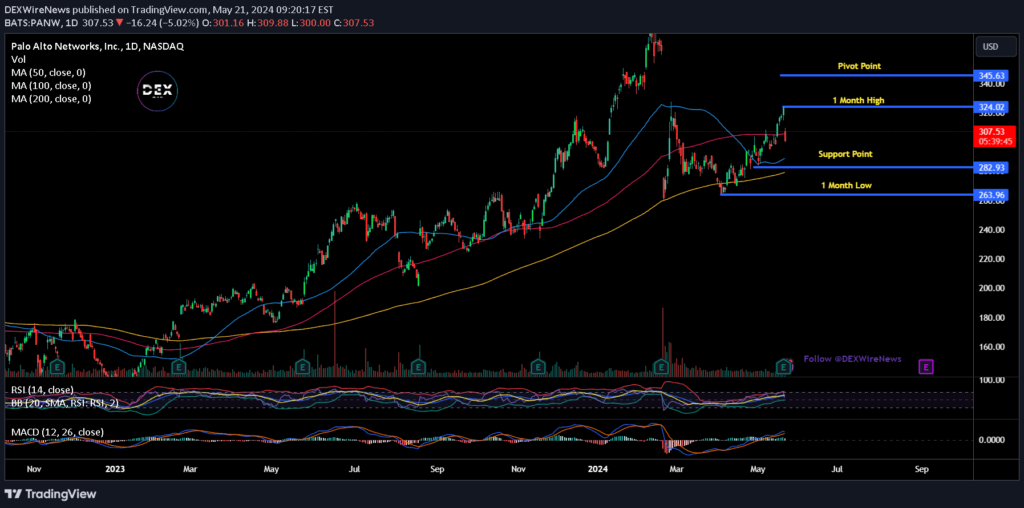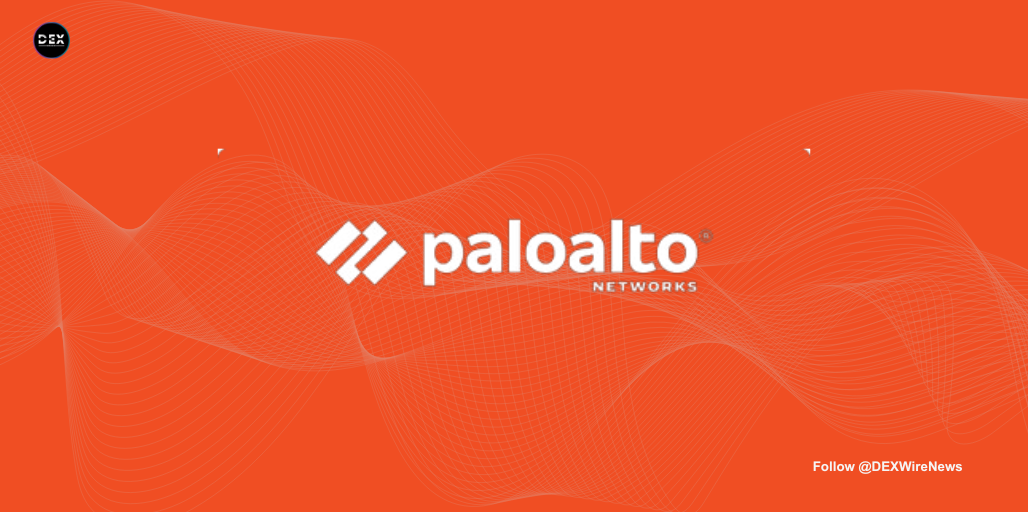Palo Alto Networks (NASDAQ: $PANW) is a leading cybersecurity company founded in 2005 by Nir Zuk. The company provides hardware and software solutions to protect enterprises from cyberattacks, breaches, and malware threats. As businesses increasingly migrate to the cloud and remote work environments, Palo Alto Networks’ modern, cloud-based network security solutions have gained significant traction, offering better performance and cost-efficiency compared to traditional on-premise solutions.
On Tuesday, May 21st, 2024, Palo Alto Networks reported quarterly earnings for the 2024 calendar year, quarter ended April 2024.
Recent Performance and Challenges
Palo Alto Networks posted revenue of $1.98 billion, a 15.3% year-over-year increase, narrowly beating analysts’ estimates of $1.97 billion. The company’s non-GAAP earnings per share (EPS) of $1.32 also surpassed expectations, coming in at a 5.6% beat over the consensus estimate of $1.25.
However, despite the top and bottom-line beats, Palo Alto Networks’ stock experienced a dip in the aftermath of the earnings report. The company’s guidance for the second quarter of 2024 projected revenue in the range of $2.15 billion to $2.17 billion, slightly lower than analysts’ expectations at the higher end of that range.
Palo Alto Network Billings Growth Slows
One of the key factors contributing to the market’s reaction was the slowdown in billings growth, a closely watched metric in the software industry. Palo Alto Networks reported a mere 3% increase in billings for the quarter, the smallest gain since its initial public offering in 2012. This deceleration raised concerns among investors about a potential slowdown in cybersecurity services demand
However, the company attributed the billings slowdown to its strategic shift towards a “platformization” approach, aimed at driving consolidation and providing customers with a period of free access to certain products as part of their commitment. Nikesh Arora, Palo Alto Networks’ CEO, acknowledged that this strategy would pose a headwind to billings over a 12- to 18-month period.
Remaining Performance Obligations and Next-Generation Revenue
Despite the billings slowdown, Palo Alto Networks highlighted other metrics that painted a more positive picture of the company’s financial health. The company’s remaining performance obligations (RPO), a measure of contracted sales that have yet to be billed, stood at $11.3 billion, up 23% year-over-year, albeit slightly missing Wall Street’s expectations.
Also, Palo Alto Networks’ next-generation annualized recurring revenue, a key metric for the company’s strategic focus, reached $3.79 billion, beating analyst estimates and reflecting a 47% year-over-year increase.
Cybersecurity Spending Outlook Remains Strong
In the face of these challenges, Palo Alto Networks’ management remains optimistic about the cybersecurity spending outlook. Arora emphasized that the company sees no change in the trajectory of cybersecurity spending, as customers continue to prioritize securing their cloud environments amid a persistent threat landscape.
“Most customers have a series of projects they want to get done and the only limiting factor seems to be the execution capability,” Arora said, highlighting the continued demand for strong cybersecurity solutions.
Competitive Landscape and Industry Consolidation
The cybersecurity industry has witnessed intense competition and consolidation in recent years, with major players vying for market share and introducing innovative solutions to stay ahead of evolving threats. Palo Alto Networks’ strategic shift towards platformization is seen as a response to this competitive landscape, enabling customers to consolidate their usage of cybersecurity solutions under a unified platform.
However, this strategy may fuel further competition as industry players adjust their pricing and product strategies to remain competitive. Analysts have expressed concerns about the potential impact of the platformization approach on the company’s top-line growth metrics over the next 12 to 18 months.
Palo Alto Networks Stock Performance
PANW shares experienced a significant decline, trading at $313.75, down 3.09% as of 11:55 AM EDT. The stock opened at a day’s range of $300.00 to $314.25 and had fallen 9% in the pre-market session after the company reported first-quarter results.
Despite beating revenue and earnings estimates, concerns over billings growth and the impact of the strategic shift towards platformization weighed on investor sentiment. The cybersecurity firm’s stock performance emphasizes the volatility surrounding the sector and the challenges that it faces in navigating competitive dynamics and executing its long-term vision.

Should You Buy Palo Alto Networks (PANW) in 2024?
This decision hinges on an investor’s risk appetite and long-term outlook. While the company’s strategic shift towards platformization has raised near-term concerns over billings growth, its strong next-generation annualized recurring revenue and remaining performance obligations demonstrate its potential.
With cybersecurity spending expected to remain strong, Palo Alto Networks’ innovative solutions could position it well for long-term growth. However, investors should closely monitor the company’s execution and the competitive landscape. For those willing to weather short-term volatility, Palo Alto Networks’ shares could potentially present an opportunity.
Click Here for Updates on Palo Alto Networks – It’s FREE to Sign Up for Text Message Notifications!
Disclaimer: This website provides information about cryptocurrency and stock market investments. This website does not provide investment advice and should not be used as a replacement for investment advice from a qualified professional. This website is for educational and informational purposes only. The owner of this website is not a registered investment advisor and does not offer investment advice. You, the reader / viewer, bear responsibility for your own investment decisions and should seek the advice of a qualified securities professional before making any investment.




